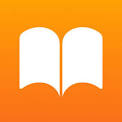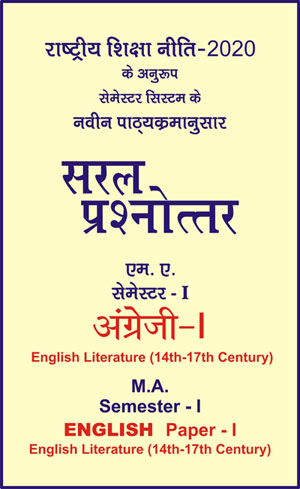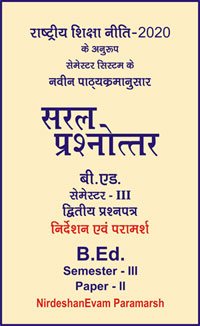|
बी ए - एम ए >> एम ए सेमेस्टर-1 - अंग्रेजी - प्रथम प्रश्नपत्र - अंग्रेजी साहित्य 14वीं-17वीं शताब्दी एम ए सेमेस्टर-1 - अंग्रेजी - प्रथम प्रश्नपत्र - अंग्रेजी साहित्य 14वीं-17वीं शताब्दीसरल प्रश्नोत्तर समूह
|
|
||||||
एम ए सेमेस्टर-1 - अंग्रेजी - प्रथम प्रश्नपत्र - अंग्रेजी साहित्य 14वीं-17वीं शताब्दी
Question- Describe 'Authorised version of Bible'.
Answer -
Quad King James Bible, 1611
The King James, or Authorised, Version of the Bible remains the most widely published text in the English language. It was the work of around 50 scholars, who were appointed in 1604 by King James (1603-25), and it is dedicated to him. Until the mid-1500s, attempts to give lay people access to an English-language Bible had resulted in severe punishment. Finally, in 1611, came an officially approved version that also had enduring appeal: the King James, or Authorised, Version.
In the West, the official language of the medieval Church was Latin - the language of the Roman Empire, which had adopted Christianity as its religion during the fourth century. Christians continued to be governed from Rome by the Pope during medieval times. Church services were conducted in Latin and translation of the Latin Bible into the vernacular, in other words the local language anyone could understand, was actively discouraged. Translations of the Bible into various forms of English, such as Old English, were made over the centuries, but these were hand-written copies with a very limited circulation.
However, by the 1500s vernacular Bibles were available in parts of Europe, where they added fuel to the popular questioning of religious authority initiated by the monk Martin Luther - a religious crisis known as the Reformation, which resulted in the splitting of Christianity into Catholic and Protestant Churches.
In England however, under the 1408 Constitutions of Oxford, .it was strictly forbidden to translate the Bible into the native tongue. This ban was vigorously enforced by Cardinal Wolsey and the Lord Chancellor, Sir Thomas More, in an attempt to prevent the rise of English 'Lutheranism'. The only authorised version of the Bible wasSt Jerome's Vulgate, which was understood only by highly-educated people.
Supporters of English Language Bibles
In 1401, on the advice of the Archbishop of Canterbury, Henry IV introduced a law which outlawed the translation of the Bible and made heresy a capital crime, punishable by burning at the stake. The first martyr to do die in this way was William Sawtre, a priest in London who preached John Wycliff's teachings, in February 1401.
Although Wycliffe had died in 1384, he did not escape Papal retribution. In 1415 he was declared a heretic, his bones were exhumed and burned along with his books, and the ashes cast into the River Swift at Lutterworth. By then the Lollard movement was in decline and it would be a hundred years before further attempts were made for an English Bible.
The Tyndale Bible
The preachings of Martin Luther, challenging the authority of the Pope, lit the flames of Protestantism across Europe in the 1520s. In 1521, the Pope condemned Luther's writings and ordered that they be burned. Henry VIII, who had an extensive theological education, opposed Luther's views, and the Pope conferred on Henry the title 'Defender of the Faith'. There were public burnings of Luther's books in London.
Flouting the ban on translating the Bible by working abroad, William Tyndale published his English version of the New Testament in Germany in 1525. Some copies were smuggled in to Britain, but many were burned was Tyndale, at the stake, in 1536, after being betrayed while working on his translation of the Old Testament. His last words were reportedly, "Lord! Open the King of England's eyes".
Since 1526, Henry VIII had been waiting for the Pope to annul his marriage to Katherine of Aragon. Furious that this didn't happen, his Act of Supremacy, agreed by Parliament on 3 November 1534, established Henry as head of the Church of England and no longer answerable to the Pope.
As a consequence, he needed an English Bible. In 1539 he gave approval to a translation by Myles Coverdale, who had worked with Tyndale. Completed in 1540, it became known as the "Great Bible". Henry VIII decreed that it should be available to everyone in every church in England.
Finally, in 1611, the King James, or Authorised, Bible appeared. The product of a team of 50 scholars, it relied extensively on Tyndale's work, using around 80 per cent of this once heretical translation. It remains the most- printed work in English in the world.
But by Shakespeare's time, England had split with Rome, and the political scenery had changed markedly. Bibles in English were now available, such as Henry VIII's authorised 'Great Bible'; the 'Geneva Bible', copiously furnished with Protestant footnotes.
King James I (1603-25; he was also James VI of Scotland) abolished the death penalty attached to English Bible translation; and commissioned a new version that would use the best available translations and sources, and importantly, be free of biased footnotes and commentaries.
The translation committee of 50 scholars drew on many sources, especially Tyndale's New Testament (as much as 80% of Tyndale's translation is reused in the King James version). The result was first printed in 1611, and was 'appointed to be read in churches'. For this purpose, it was published in a large format, suitable for public use, and without illustrations. The use of the antiquated 'black letter' font was intended to add status and authority to the new version.
Although the Welsh language was no longer used in official documents, a Welsh translation of the Great Bible was achieved by William Morgan and published in 1588.
A Gaelic version of the New Testament was published in Ireland in 1603, but the Old Testament did not appear until 1685. Both were adapted for Scottish Highlanders in 1690, with more suitable translations in 1767 (New) and 1807 (Old).
A complex Manx translation appeared in 1772 but although parts of the Bible were translated into Cornish during the 18th century, it was not until 2004 that the New Testament was completed.
|
|||||
- Question- Define Renaissance humanism.
- Question- Describe 'Authorised version of Bible'.
- Question- What were women's writing roles in the 17th century?
- Question- Write detailed note on enlightenment ideas and philosophies.
- Question- What was the political and religious views during renaissance?
- Question- Comment on the Development of English Prose?
- Question- Write a brief note on the important Restoration prose writers.
- Question- "Thomas More was spiritual writer of renaissance age?" Explain this.
- Question- What was the contribution of Thomas More in Renaissance Literature?
- Question- What impact does Thomas More's Utopia have on the Renaissance?
- Question- Discuss the theme analysis "of their slaves and their marriages" in Book II of Utopia by Thomas More.
- Question- Write a summary of the theme "of their slaves and of their marriages" from Utopia.
- Question- Write a character sketch of Raphael Hythloday in Utopia by Thomas More.
- Question- What is a Utopian slave?
- Question- What are the rules for marriage in a Utopian society? Answer -
- Question- What happens to adulterers in Utopia?
- Question- What did Thomas More do in the Renaissance?
- Question- Is Thomas More's Utopia an example of renaissance humanism?
- Question- What are the laws of Utopia ?
- Question- Is divorce allowed in Utopian society?
- Question- What is an example of an Utopia ?
- Question- Who came up with the idea of Utopia ?
- Question- What is the difference between Utopian society and Dystopian society?
- Question- Write a note on Bacon as a prose writer.
- Question- Describe Bacon's contribution to English Prose.
- Question- "Bacon remains the first of English essayists and for the sheer mass and weight of genuis the greatest." Elucidate.
- Question- How far do you agree with the view that Bacon's essays are good advice for Satan's kingdom?
- Question- Critical analysis of New Atlantis by Francis Bacon.
- Question- Write a summary of the novel "The new Atlantis" by Francis Bacon.
- Question- Write the theme of the New Atlantis of Bacon.
- Question- What happened to Atlantis?
- Question- Why are the people of New Atlantis so secretive?
- Question- What do the sailors feel about the island ?
- Question- What is the moral of the New Atlantis ?
- Question- What is the Atlantis of Myth?
- Question- What are the advantages of Christianity in the New Atlantis? Answer -
- Question- What is the significance of Bacon's New Atlantis?
- Question- What did Sir Francis Bacon do in the Renaissance ?
- Question- What is Bacon's essayism?
- Question- Write a note life and works of Milton.
- Question- John Milton the poet as well as the prose writer.
- Question- Write a summary of the Areopagitica by John Milton.
- Question- Write critical analysis of the essay "Areopagitica" by John Milton.
- Question- What are the themes of Areopagitica?
- Question- What are John Milton's arguments in Areopagitica?
- Question- Why did Milton wrote Areopagitica?
- Question- What did Areopagitica influence?
- Question- What is the necessity of freedom of press in Areopagitica?
- Question- What is the importance of Areopagitica?
- Question- How does Areopagitica relate to Paradise Lost?
- Question- What is the main theme of Areopagitica?
- Question- What does Milton say about knowledge of good and evil in Areopagitica?
- Question- How did Milton advocate freedom of speech in his Areopagitica?
- Question- Write a note on polarity and structure in Milton's "Areopagitica".
- Question- Write a note on Chaucer's realism.
- Question- "Chaucer is not only the father of English poetry but also of the English language." Justify.
- Question- Write an essay on Chaucer's narrative art.
- Question- Write a detailed summary of poetry 'The Knight's Tale'.
- Question- Write a note on the characters of "The Knight's Tale".
- Question- Explain with reference to the context any four of the following passages.
- Question- Write a note on the diction and versification of Spenser.
- Question- Write a note on Spenser's pictorial art.
- Question- Elaborate the moral and spiritual allegory in Book I of the Faerie Queene.
- Question- Discuss Spenser as the poet of classical Renaissance.
- Question- Write critical analysis of the poem "Like as a Huntsman" by Edmund Spenser.
- Question- Write a summary of the poem "Like as a Huntsman" by Edmund Spenser.
- Question- What is the thematic split of a sonnet 67 by Spenser ?
- Question- What is the central metaphor in the sonnet "Like as a Huntsman"?
- Question- What is a Spenserian sonnet?
- Question- What is the difference between the Spenserian and Shakespearean sonnet?
- Question- What seemed strange to the hunter at the end of the sonnet No. 67?
- Question- What are main qualities/characteristics of Spenser's poetry?
- Question- What literary devices used in the poem "Like as Huntsman" by Spenser ?
- Question- What is sonnet sequence?
- Question- Explain with reference to the context any four of the following passages.
- Question- What was the Thomas Wyatt's contribution as a sonneteer in Elizabethan Age?
- Question- Thomas Wyatt as a sonneter of Elizabethan age.
- Question- Write critical analysis of the poem "I Find No Peace And All My War is Done".
- Question- Write a note on summary of the poem "I find no peace and all my war is done" by Thomas Wyatt.
- Question- What is the theme of the poem "I find no peace" by Thomas Wyatt ?
- Question- What is the meaning of "I find no peace" by Thomas Wyatt?
- Question- Why do Thomas Wyatt's poems deal with love and heart breaks?
- Question- What is an anaphora in the poem "I find no peace"?
- Question- How does the poet show his contrary feelings in the poem "I find no peace"?
- Question- What is the figure of speech in "I find no peace" and all my war is done?
- Question- What is Sir Thomas Wyatt known for?
- Question- Is Thomas Wyatt a renaissance poet ?
- Question- What type of poet was Thomas Wyatt ?
- Question- What are the characteristics of Sir Thomas Wyatt's poetry?
- Question- What poems did Thomas Wyatt write?
- Question- Explain with reference to the context any four of the following passages.
- Question- Sir Philip Sidney was a poet of Elizabethan age.
- Question- Write a critical analysis of the poem "My mouth doth water and my breast do swell" by sir Philip Sidney.
- Question- Write a summary of the poem "My mouth doth water and my breast do swell" by, Sir Philip Sidney.
- Question- What are the three kinds of poetry according to Sidney?
- Question- Which is the highest type of poetry according to Philip Sidney?
- Question- What is the writing style of Philip Sidney?
- Question- What type of poet was Sir Philip Sidney?
- Question- What is the contribution of Sidney in English literature?
- Question- "My mouth doth water and my breast doth swell" - analyse the following lines by Sir Philip Sidney.
- Question- Who does Stella refers to in Sonnet No. 37 written by Sidney?
- Question- What is the theme of the poem Astrophel and Stella ?
- Question- Explain with reference to the context any four of the following passages.
- Question- Describe Milton's imagery and his use of similes.
- Question- Point out the sublime quality of Milton's poetry.
- Question- Assess (Evaluate) Milton's 'Paradise Lost' as a classical epic.
- Question- Who is the hero of Paradise Lost ? Give reasons for your answer.
- Question- Write an essay on the autobiographical element in Paradise Lost.
- Question- Write an essay on Milton as a child of Renaissance and Reformation.
- Question- Write a note on Milton's Grand Style.
- Question- Explain with reference to the context any four of the following passages.
- Question- Andrew Marvell was a poet of Seventeenth Century of English literature.
- Question- Andrew Marvell as a "metaphysical poet" of England.
- Question- Write a critical analysis of the poem "To His Coy Mistress" by Andrew Marvell.
- Question- Write a summary of the poem "To His Coy Mistress".
- Question- What is the most common metaphor in "To His Coy Mistress”?
- Question- What is the poem "To his Coy Mistress" by Andrew Marvell ?
- Question- What is the symbolism in "To his Coy Mistress" ?
- Question- What kind of justification does the speaker employ to persuade his mistress in To His Coy Mistress'?
- Question- How is love presented in "To His Coy Mistress"?
- Question- Was Marvell a Cavalier poet?
- Question- How does Marvell use metaphysical conceit in his poem ?
- Question- How is time presented in poem "To His Coy Mistress" ?
- Question- How is "To His Coy Mistress" a three part argument?
- Question- Explain with reference to the context any four of the following passages.
- Question- Discuss George Herbert as a metaphysical religious poet.
- Question- George Herbert as British poet of English literature.
- Question- Write critical analysis of the poem "The Virtue" by George Herbert.
- Question- Write a note on summary of the poem "Virtue" by George Herbert.
- Question- What are the characteristics of Herbert's poetry?
- Question- What type of poem is virtue by George Herbert ?
- Question- What is the structure of 'Virtue' poem?
- Question- What is 'Virtuous Soul' ?
- Question- What are the dewdrops compared to and why?
- Question- What does the 'Sweet day', 'rose' and spring symbolize in the poem ?
- Question- What is the central theme of the poem 'virtue'?
- Question- Explain with reference to the context any four of the following passages.
- Question- Explain Henry Vaughan as a metaphysical poet of English literature.
- Question- Write a note on the Henry Vaughan's poetry writing style and influences.
- Question- Write a critical analysis of the poem "Retreat" by Henry Vaughan.
- Question- Discuss the summary of the poem "The Retreat" by Henry Vaughan.
- Question- What is the major theme of the poem "The Retreat"?
- Question- How is childhood compared to glory in "The Retreat"?
- Question- How does Vaughan idolize childhood?
- Question- From whence the enlightened spirit trees that "shady city of palm trees" where does this line occur? Comment on the allusion.
- Question- What does Henry Vaughan regret in the poem "The Retreat"?
- Question- Why is Henry Vaughan bemoaning his sins in this poem?
- Question- What is the relationship between the poem "The Retreat" and speaker?
- Question- Who were the Cavalier poets?
- Question- What is Henry Vaughan known for?
- Question- Explain with reference to the context any four of the following passages.
- Question- Write a note on Life and Works of Marlowe.
- Question- Write a note on Marlowe as a dramatist or playwright.
- Question- What do the critics mean by Marlowe's mightyline'?
- Question- Marlowe's tragic heroes are monomaniacs with some single obssesion. Analyse the statement.
- Question- Marlowe has rightly been called the morning star of English Drama. Analyse.
- Question- 'Marlowe is the greatest poet of the world.' Is this statement true?
- Question- Analyse Marlowe's conception of tragedy.
- Question- Discuss the causes of tragedy in Dr. Faustus.
- Question- Write a critical essay on the conflict between good and evil in Doctor Faustus.
- Question- Write a critical essay on Faustus as a tragic hero.
- Question- Explain with reference to the context any four of the following passages.
- Question- Comment upon the symbolism in "The Tempest'.
- Question- Write a short note on the English Masque with particular reference to the masque in "The Tempest'.
- Question- The rarer action is in virtue than in rengeance." Bring out the truth of this statement in the light of the Tempest.
- Question- What is meant by the remark that the Tempest observes the Three unities of dramatic principles?
- Question- Write a brief character sketch of Prospero. Would you call him perfect.
- Question- What estimate have you formed of Ariel ?
- Question- Bring out the romantic elements in the Tempest.
- Question- How this play bears the title The Tempest. Comments.
- Question- What are the keynote of the play, 'The Tempest'.
- Question- What is Shakespeare's concept of comedy?
- Question- Explain with reference to the context any four of the following passages.
- Question- John Webster as English Jacobean dramatist.
- Question- Write a summary of the drama "The Duchess of Malfi" by Webster.
- Question- Character of the Duchess stands supreme among all the other characters in the play.
- Question- Bosola is called "a villain in the beginning turns to be a tragic hero of the play."
- Question- What is the themes of the play the "Duchess of Malfi" by John Webster ?
- Question- What happens to Antonio and Ferdinand in the Duchess of Malfi ?
- Question- What is position Bosola take in play, when fight between good and evil in the drama?
- Question- Compare and contrast the Duchess's death with those of her husband and brothers, and explain the importance.
- Question- Why Ferdinand reacts so strongly to the Duchess's remarriage?
- Question- Who is the most courageous character in the play? Defend own choice.
- Question- What is the importance of justice in the play?
- Question- What is John Webster best known for?
- Question- How many plays did Webster write?
- Question- John Webster as Renaissance Dramatist.
- Question- Explain with reference to the context any four of the following passages.
- Question- Consider William Congreve as a dramatist.
- Question- Write a note on the plot of construction of Congreve.
- Question- "Millamant is the most finished creation of Congreve." Discuss.
- Question- Discuss Congreve's The Way of the World' as a drama of comedy of manners.
- Question- Write a note on Congreave's art of characterisation with special reference to "The Way of the World."
- Question- "Congreve's plays are a faithful reflection of the upper class life of the day." Discuss.
- Question- Analyse "The Way of the World' or a mirror of the society of the time.
- Question- Discuss wit and humour in 'The Way of the World'.
- Question- Compare and contrast Lady Wishfort and Mrs. Marwood.
- Question- Discuss the intrigue hatched by Mirabell against Lady Wishfort.
- Question- Explain with reference to the context any four of the following passages.

 i
i 









